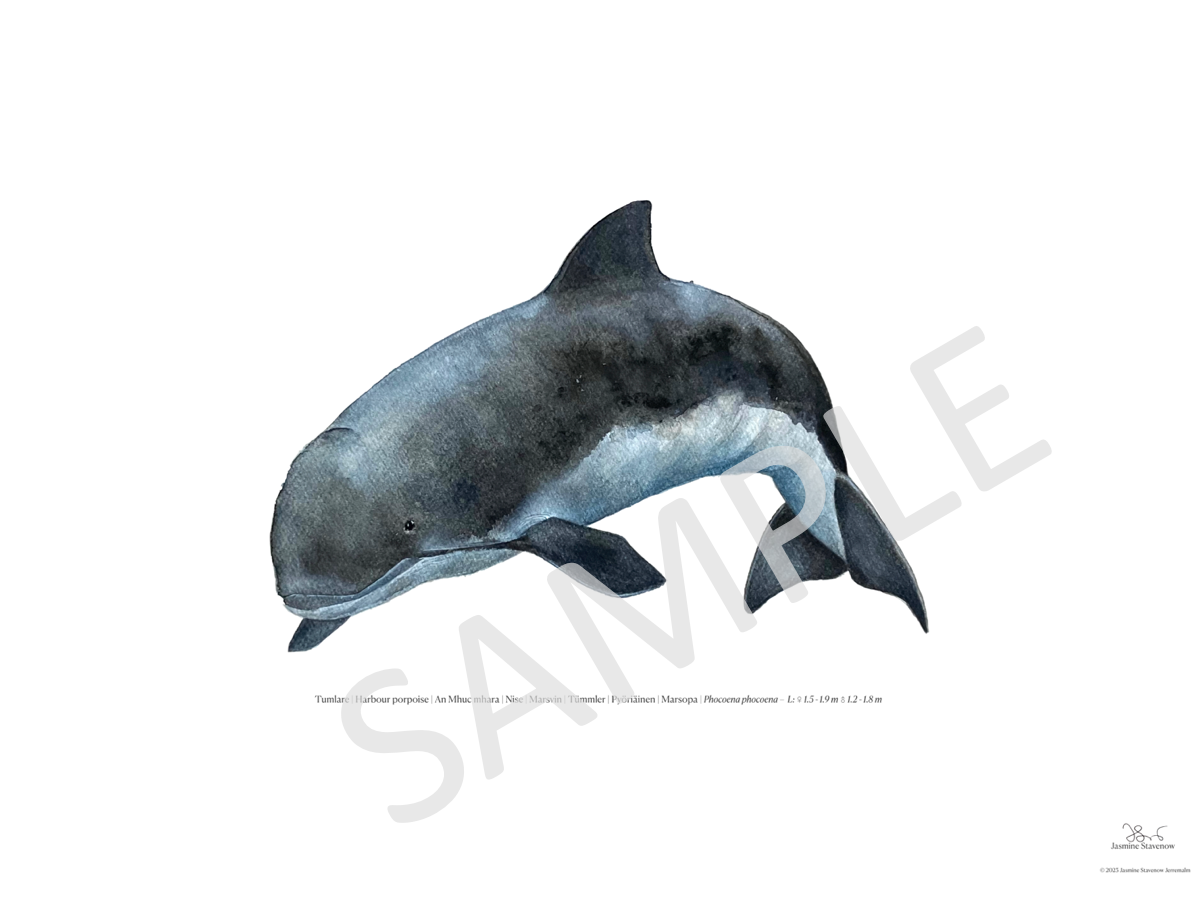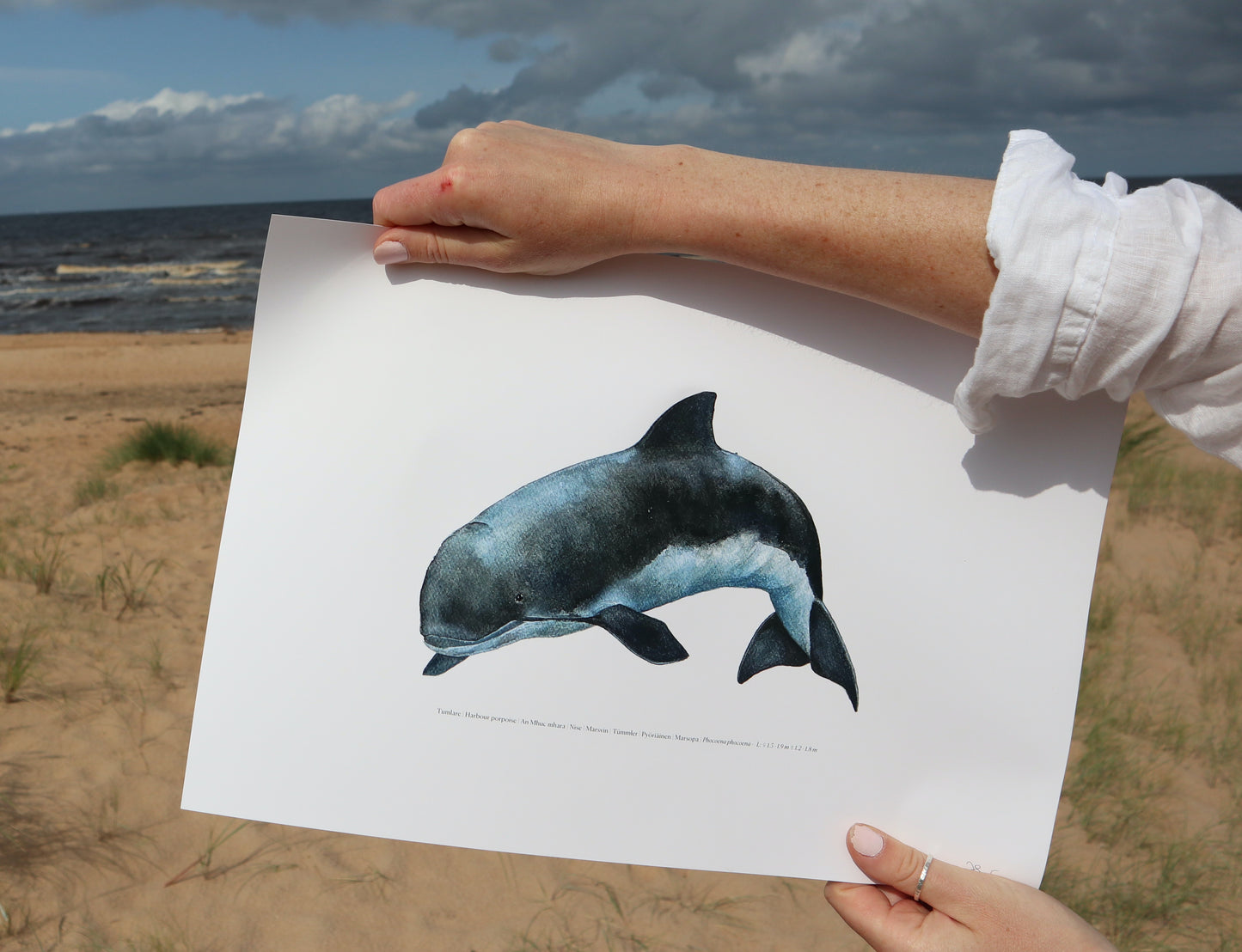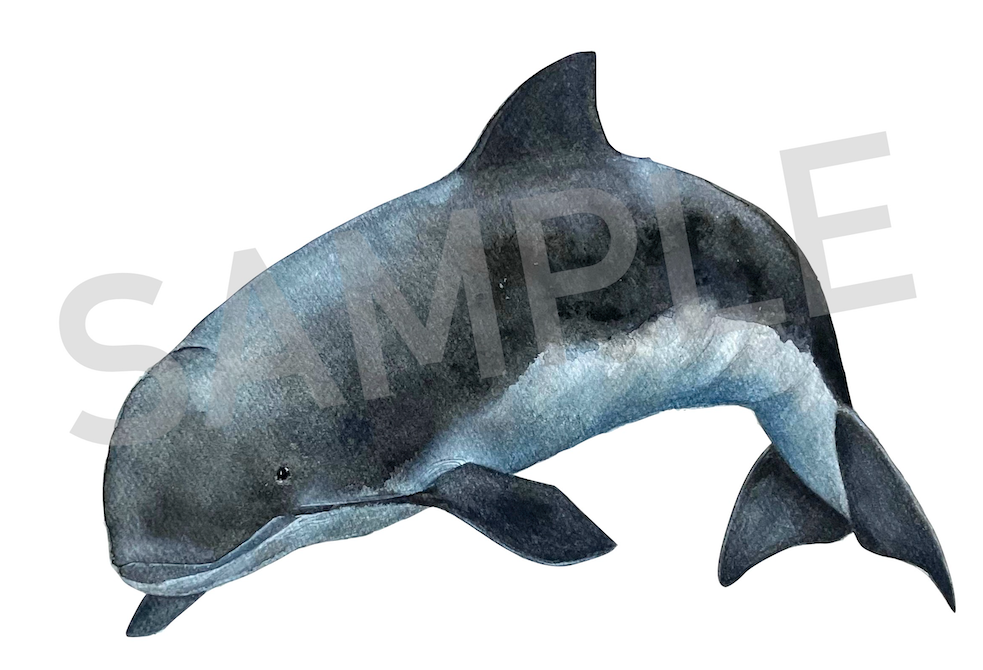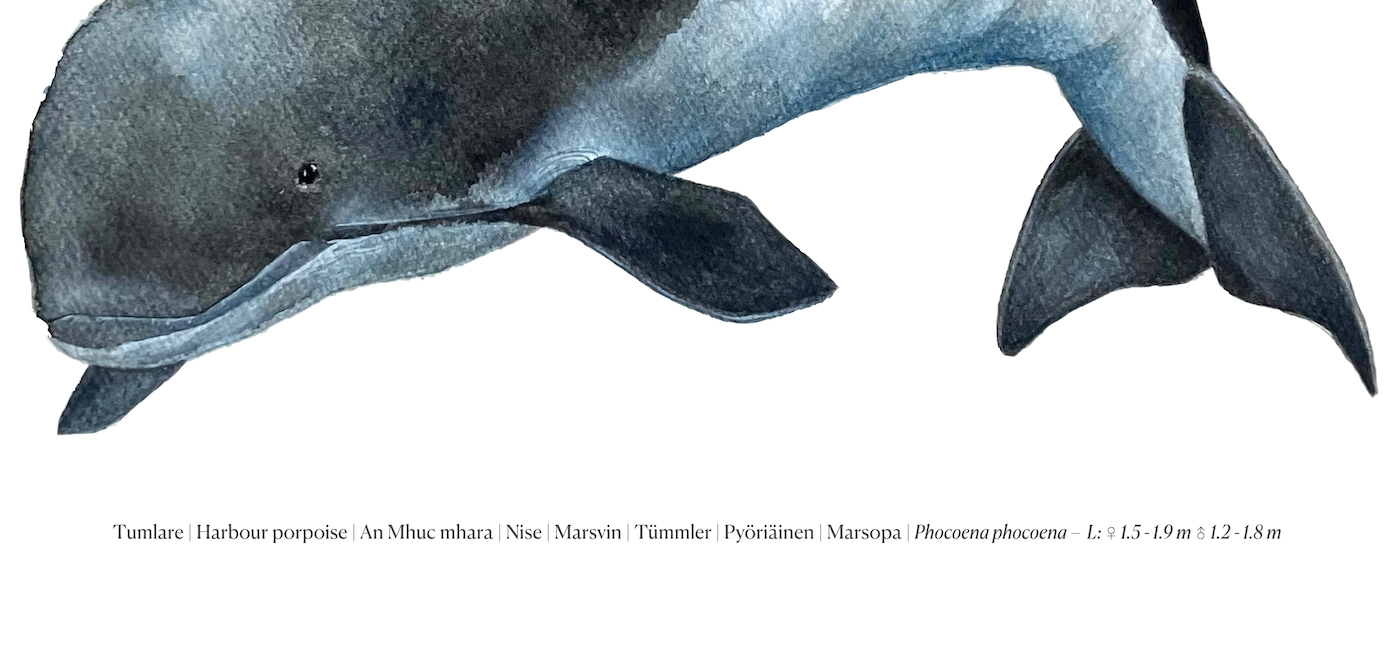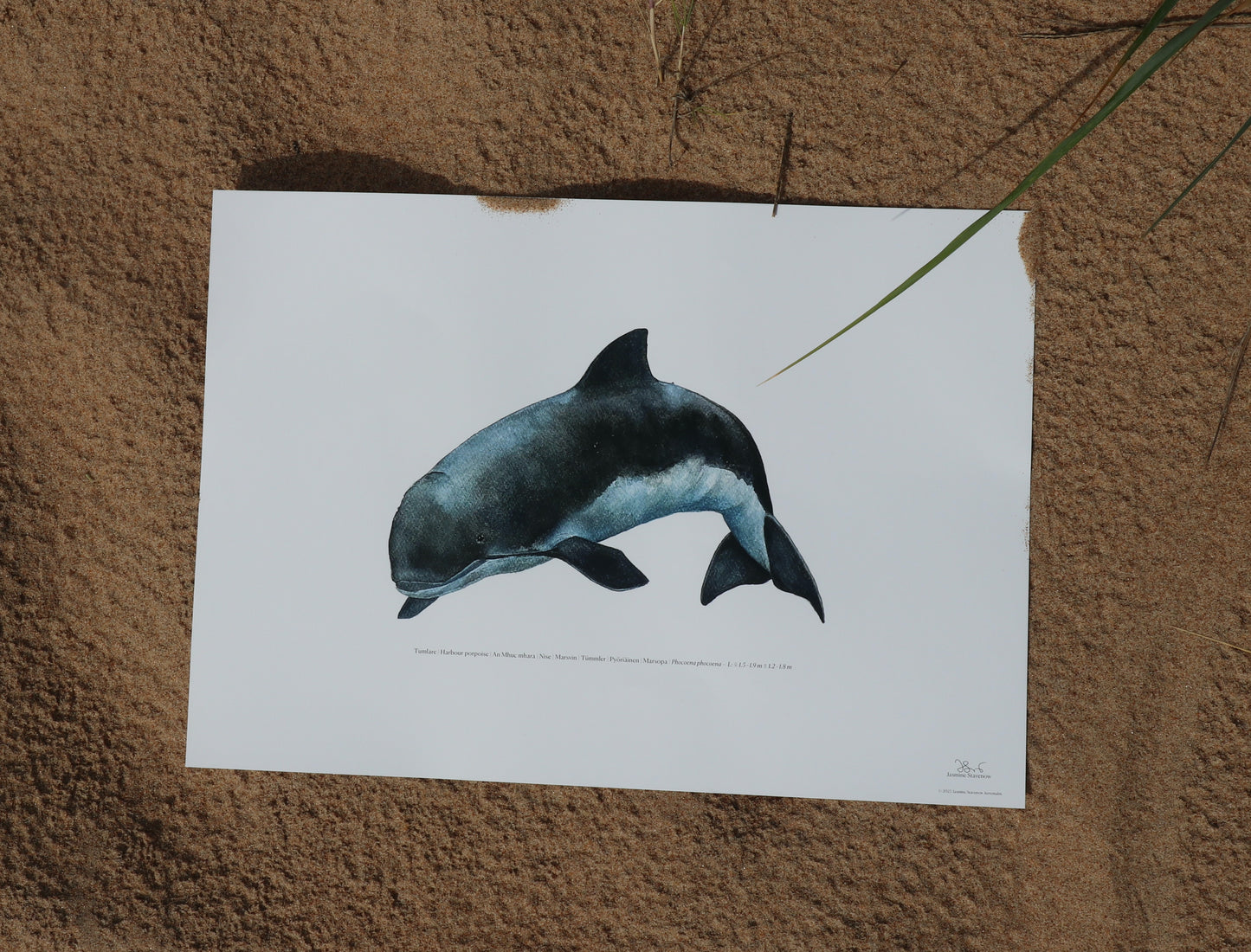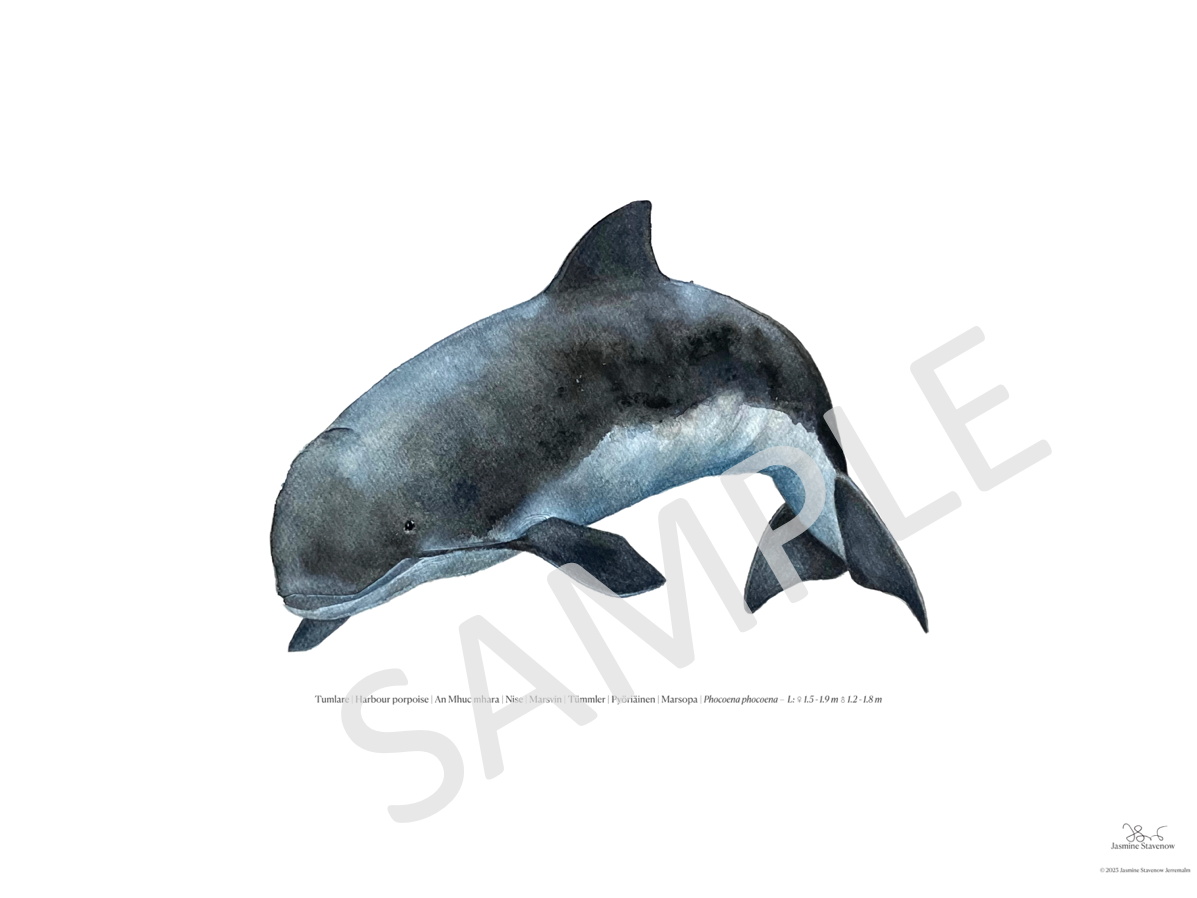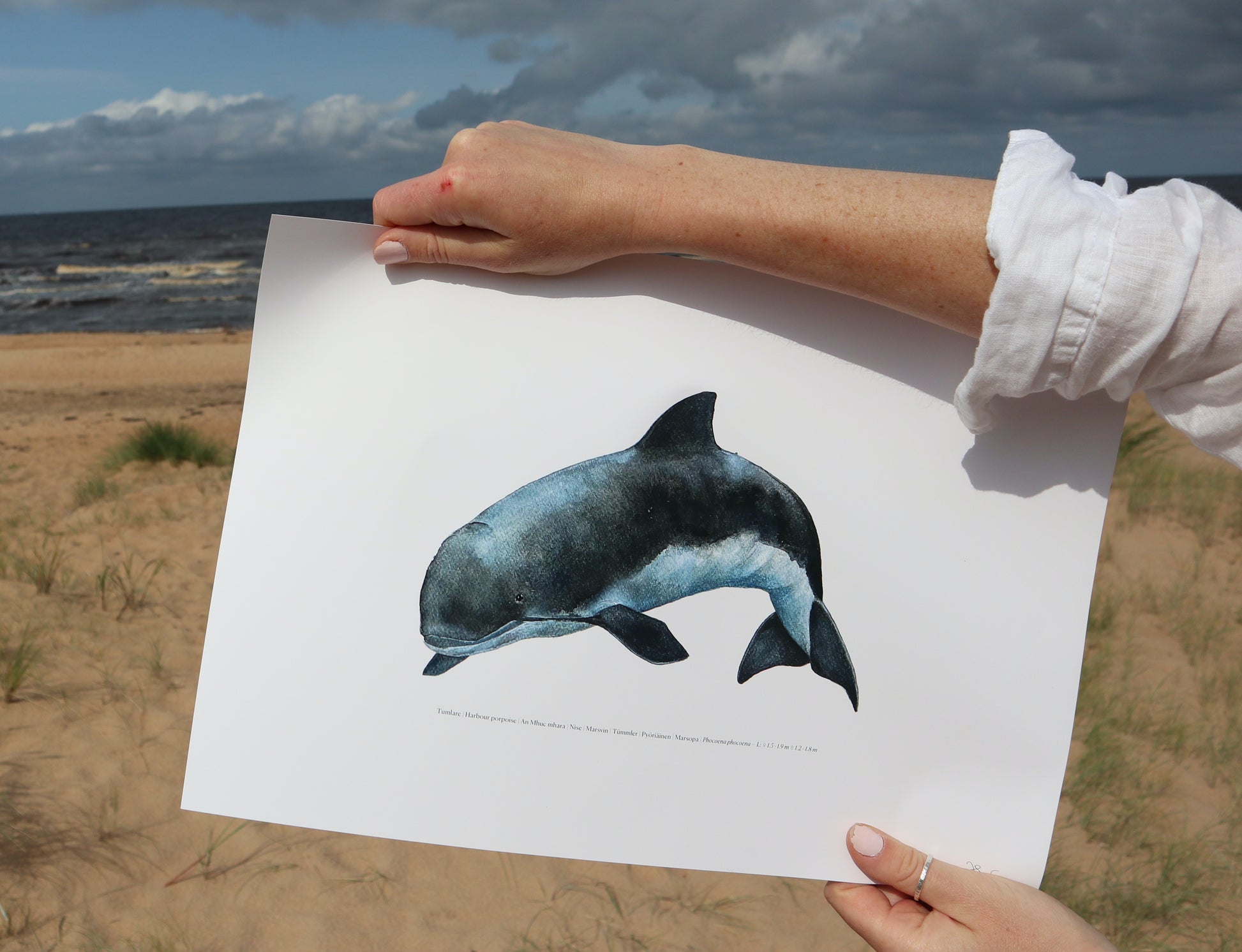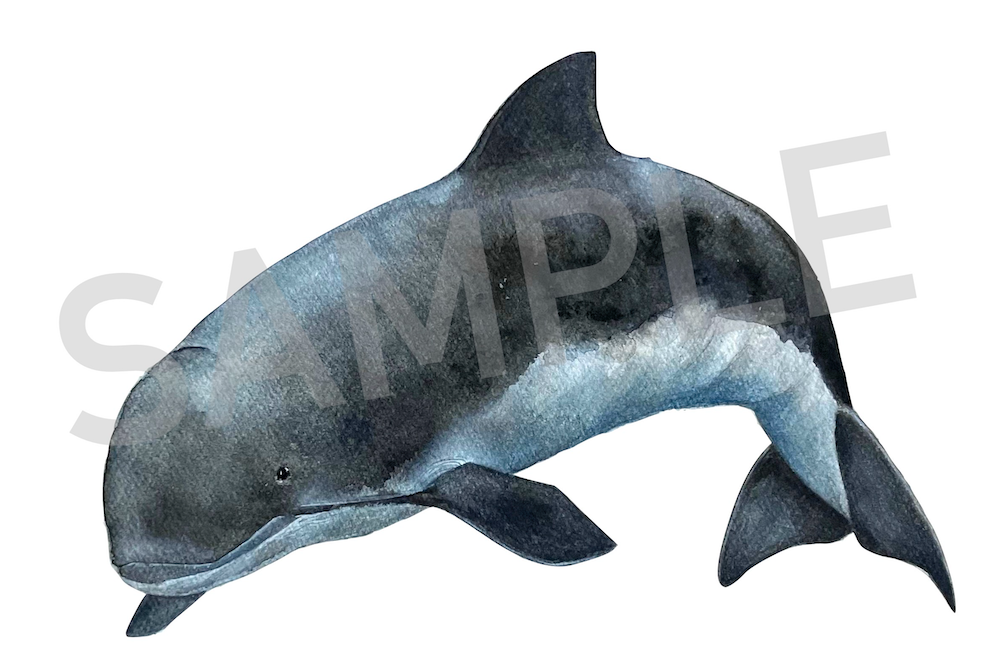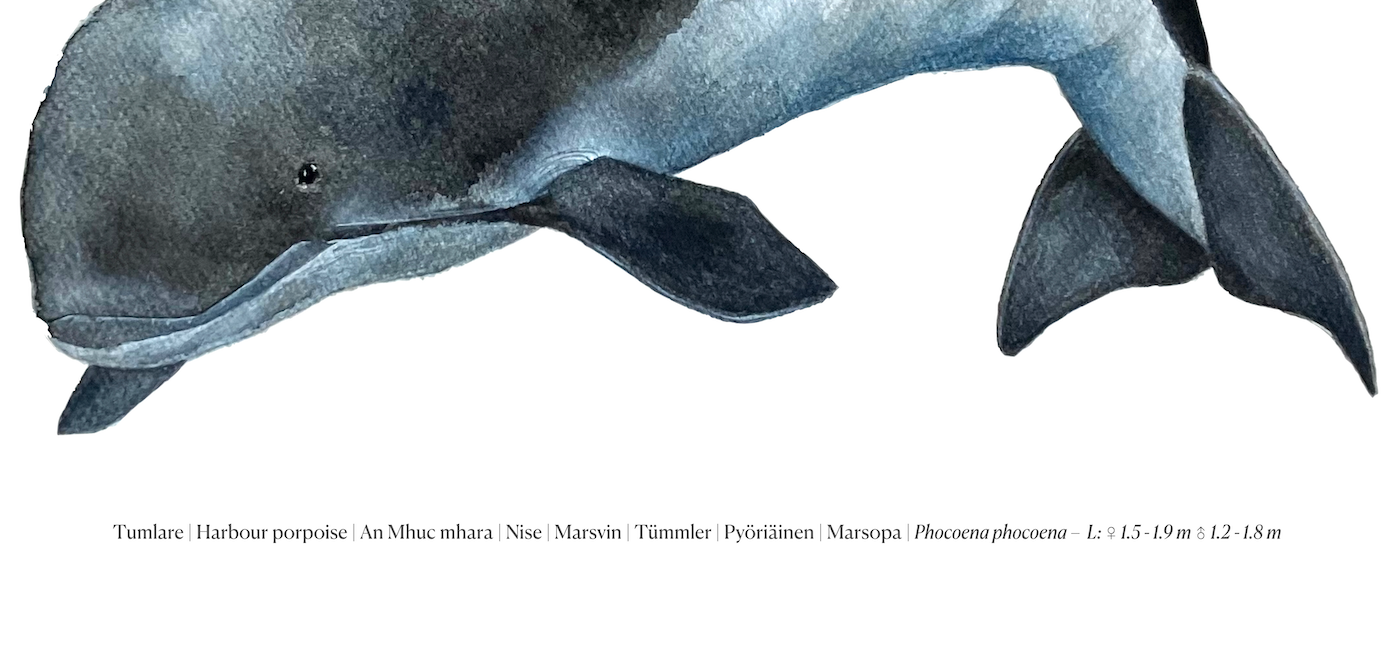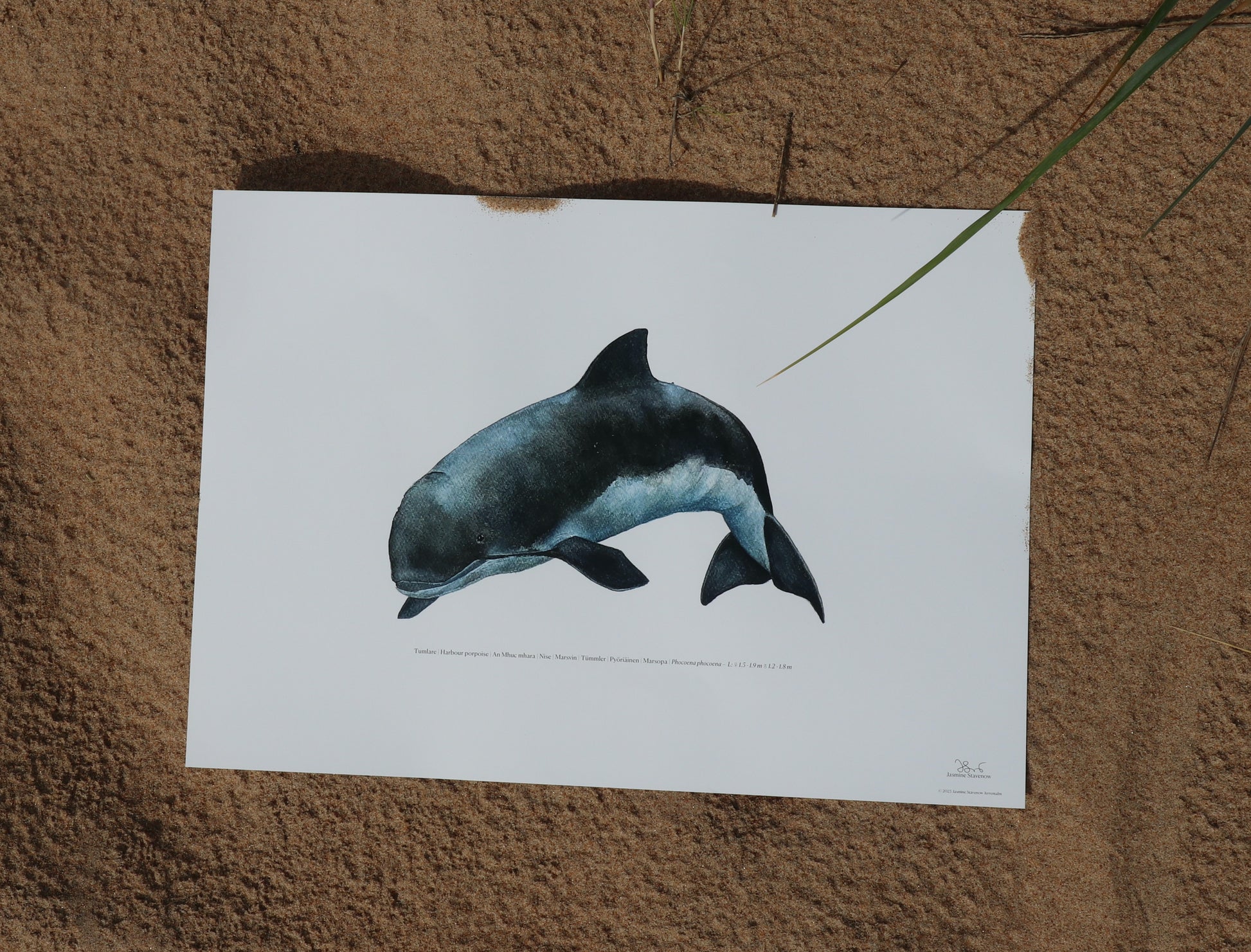Whales et al. ART
Tumlare | Harbour porpoise
Tumlare | Harbour porpoise
Couldn't load pickup availability
Tumlare | Harbour porpoise - Poster print
Water colour illustration - Global species collection
Size: A3 paper
High quality silk paper (200gsm)
Below the water colour illustration, there is a single text line with knowledge about the species. You'll find the common species names in multiple languages and its latin species name (see below) and also information about the size of the species, for females and males.
Swedish: Tumlare
English: Harbour porpoise
Gaelige: An Mhuc mhara
Norwegian: Nise
Danish: Marsvin
German: Tümmler
Finnish: Pyöriäinen
Spanish: Marsopa
Latin species name: Phocoena phocoena
About Harbour porpoises
The Harbour porpoise is a small toothed whale, they reach a size of up to about 1.9m, although typically a bit smaller. There are six species of porpoises, of which the Harbour porpoise is the most common. They typically live quite coastal, which means they often can be observed from shore. However, they are known to suddenly appear, and then as sudden disappear again, which means they can be perceived to have a somewhat elusive nature. They do not live in groups, as for example dolphins are known to do, but they sometimes hunt together. They may look similar to dolphins - but they do not belong to the same genetic family. Some external differences are the head (porpoises does not have the typical sharp beak that dolphins do), the teeth (porpoises have round teeth - dolphins pointy), and the dorsal fin (porpoises have a triangular shape, dolphins more pointy). A porpoise looks like a rounder, smaller and less sharply edged dolphin.
The Global Species Collection aims to highlight species that are familiar to many, as they are widely distributed and in many places numerous. In several geographical regions, they have played, and still play, important roles in human cultures, and they have names in many languages. They are some of the most loved and charismatic species, still they hold many secrets left for science to unveil.
Share
